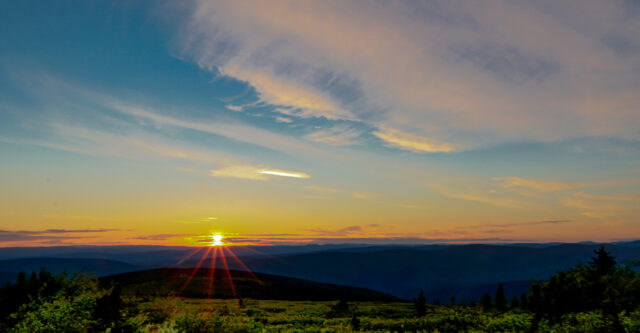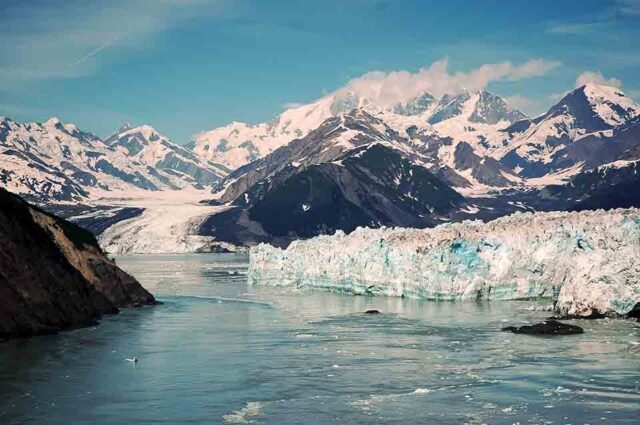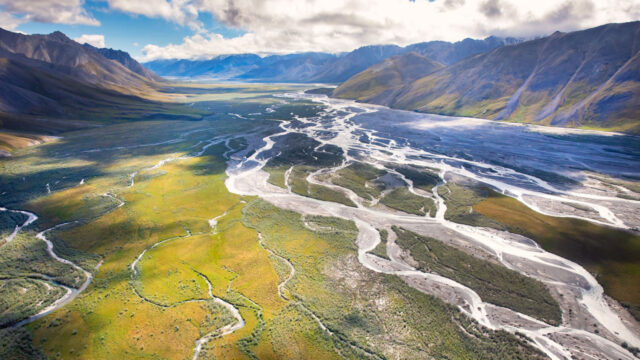
Alaska, the largest state in the United States by land area, is known for its breathtaking natural beauty and unique cultural heritage. However, there’s much more to this rugged frontier than meets the eye. In this article, we’ll delve into 6 intriguing facts about Alaska that are sure to surprise and fascinate you. From its wildlife to its history and geography, Alaska is a treasure trove of hidden gems. Let’s explore!
The Land of the Midnight Sun

One of the most astonishing facts about Alaska is its extreme variation in daylight hours throughout the year. In the summer, especially in northern Alaska, the sun never truly sets, leading to a phenomenon known as the “Midnight Sun.” This remarkable natural event allows residents and visitors alike to experience 24 hours of daylight. This extended daylight period offers unique opportunities for outdoor activities such as hiking, fishing, and wildlife observation. It’s an experience that truly immerses you in the rugged beauty of this northernmost state.
Conversely, during the winter months, parts of the state experience almost complete darkness for extended periods. This phenomenon, known as the “Polar Night,” is a stark contrast to the Midnight Sun. The long, dark winter nights provide an ideal backdrop for stargazing and the chance to witness the mesmerizing aurora borealis, also known as the northern lights. These celestial displays paint the night sky with vibrant colors, creating a surreal and awe-inspiring experience.
Home to 17 of the 20 Highest Peaks in the U.S
Alaska boasts some of the most impressive mountain ranges in North America, including the renowned Alaska Range. What many people don’t realize is that 17 of the 20 highest peaks in the United States are located in Alaska. The crowning jewel of them all is Mount Denali, the highest peak in North America, standing at a staggering 20,310 feet (6,194 meters) above sea level.
Mount Denali, formerly known as Mount McKinley, is a place of pilgrimage for mountaineers from around the world. Climbing Denali is a challenging and rewarding endeavor that requires careful preparation and training. Only a fraction of those who attempt the ascent successfully reach its summit, making it a true test of determination and skill. The breathtaking views from the top of Denali and the sense of accomplishment that comes with conquering its heights are experiences that stay with climbers for a lifetime.
An Abundance of Glaciers

Alaska is often referred to as the “Land of Glaciers,” and for good reason. The state is home to more than 100,000 glaciers, covering approximately 29,000 square miles (75,000 square kilometers). These glaciers, including the famous Hubbard Glacier and Mendenhall Glacier, are not only awe-inspiring but also vital for maintaining the state’s unique ecosystem.
Glaciers are dynamic and ever-changing natural wonders that have shaped Alaska’s landscape over millions of years. They flow like slow rivers of ice, carving valleys and fjords as they move. The Hubbard Glacier, located in eastern Alaska, is one of the most active tidewater glaciers in North America. It regularly calves, sending massive chunks of ice crashing into the ocean in a spectacular display of nature’s power. Witnessing this phenomenon up close is a humbling experience that reminds us of the Earth’s constant transformation.
Unique Challenges in Healthcare
Healthcare in Alaska, including dental care, presents unique challenges due to the state’s vast size and remote communities. Dental care in Alaska can be more challenging to access, particularly in rural and remote areas where shortages of dental providers are common. Many residents, especially in indigenous communities, face barriers to dental care, including geographic isolation and limited access to preventive services. For example, it would be easier for you to find an emergency dentist in Anchorage than in remote areas of the state.
To address these challenges, various programs and initiatives have been launched in Alaska, focusing on community health centers, mobile dental clinics, and teledentistry to expand access to dental services. Additionally, oral health education and preventive measures play a crucial role in promoting better dental health outcomes in the state. Despite these challenges, efforts are ongoing to improve access to dental care and oral health in Alaska, recognizing the importance of comprehensive healthcare for all residents.
A Haven for Wildlife

Alaska is a wildlife enthusiast’s dream come true. The state’s vast and diverse ecosystems support an incredible array of animals, both terrestrial and marine. From the iconic moose to the majestic grizzly bear, and from the bald eagle to the elusive wolf, Alaska’s wildlife is a testament to the resilience and adaptability of nature.
One of the most sought-after wildlife encounters in Alaska is watching the grizzly bears in their natural habitat. Katmai National Park and Preserve, located in southern Alaska, is renowned for its brown bear population. Every summer, these massive bears gather along the Brooks River to feast on the annual salmon run. Observing these powerful creatures fishing for salmon is a thrilling and educational experience that offers a rare glimpse into the circle of life in the wild.
Alaska is also a haven for birdwatchers. The state’s diverse landscapes, including coastal regions, tundra, and boreal forests, provide habitat for a wide variety of bird species. The Copper River Delta, in particular, is a critical stopover point for migratory birds traveling along the Pacific Flyway. Bird enthusiasts flock to this region to witness the stunning spectacle of thousands of shorebirds in flight. The sight and sounds of these migratory birds fill the air, creating a symphony of nature that leaves a lasting impression.
Russian Influence Runs Deep
While most people associate Alaska with the United States, the state’s history is deeply intertwined with Russia. In the 18th century, Alaska was a Russian territory known as Russian America. Russian explorers and fur traders established settlements and trading posts along the coast, marking the beginning of a rich cultural exchange between Russia and the indigenous peoples of Alaska.
The Russian influence in Alaska is still visible today, particularly in the state’s architecture and place names. Towns like Sitka and Kodiak bear witness to this historical connection. Visitors can explore Russian Orthodox churches, such as the St. Michael’s Cathedral in Sitka, which stands as a testament to the enduring legacy of Russian culture in Alaska.
It wasn’t until 1867 that the United States purchased Alaska from Russia for $7.2 million, in what is now considered one of the best real estate deals in history. The purchase, known as “Seward’s Folly” at the time, turned out to be a wise investment as Alaska’s vast natural resources and strategic location have since proved invaluable to the United States.
Final Thoughts

Alaska is a land of unparalleled natural beauty, rich history, and fascinating facts. From the mesmerizing Midnight Sun to the towering peaks of the Alaska Range, this state offers a unique blend of adventure and wonder. Whether you’re an outdoor enthusiast, a history buff, or simply curious about the world, Alaska has something to captivate every traveler. So, consider adding “The Last Frontier” to your bucket list and embark on an unforgettable journey to discover these 6 incredible facts about Alaska for yourself.











